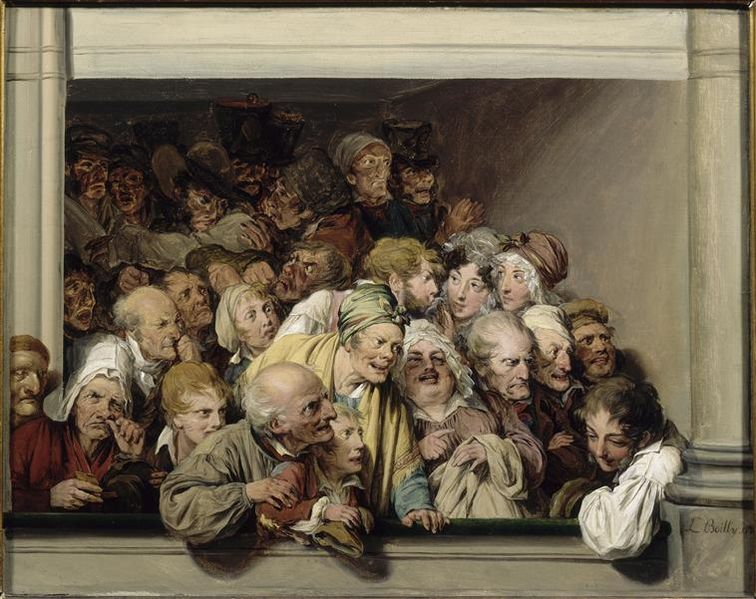By Plinio Corrêa de Oliveira
I have insisted many times here that we should have a longing for the marvelous. The series on Europeanization, which I do here about once a month, are aimed precisely at awakening in us a taste for the marvelous, which, in the artistic field, Europe has developed to an unprecedented degree. From time to time, I give something about Asia to show some other aspects of this marvelous. I have shown that the truly wonderful things made by man, or directly by God, are masterpieces of creation.
Now, if the whole Creation reminds us of God, it is clear that everything which is more splendid in creation reminds us of God more splendidly. So it is entirely natural for man to have this yearning for the marvelous as a means of drawing closer to God. And it is also for this reason that we see that Communism seeks to eliminate the marvelous from everything and makes everything more vulgar, down-to-earth, and as banal as possible: It is a way of turning people into atheists. As much as possible, it extinguishes movements in the human soul that lead to God.
There is a phrase they gave me, by a Murillo Mendes. It is from his recent memoir: “Driven by a profound instinct, I always tried to sacralize everyday life, to debanalize real life, to create or recreate a fairy-like dimension.”
So here you have three successive things: “Sacralize everyday life.”
This means that everyday life is so banal that we need to introduce some nobility and elevation in it, which is what he calls to “sacralize.” Because [only] what is sacred has the apex of beauty, nobility, and elevation.
Then comes the second point: “Debanalize real life.”
This is another way of saying, sacralize everyday life by taking the banal out of it.
Now comes the most characteristic: “Create or recreate a fairy-like dimension.”

George Peabody Library in Baltimore, Maryland, completed in 1878, is located on the Peabody campus at West Mount Vernon Place. Photo by Matthew Petroff.
That is, an ambience of fairy tale [or legend]. The word feérico refers to fairy, fairy tales, in other words, things which give meaning to life, as if it were a fairy tale. This is something he seeks to resurrect all the time.
Now what is this fairy tale about? These people consider religion a myth. So this is about acting as if fairy tales were true; because without the beauty which they blasphemously call “mythical religion,” life would become unbearable.
This is one more reason for us to understand how much we should sacralize our daily life. But do so with authentic sacral values! Debanalize it by expelling banality from our souls and by elevating it to legendary values, not those of fairy tales but to the true supernatural of the Catholic Faith.

The 2011 Stuttgart City Library, in Stuttgart, Germany, designed by the Korean architect Eun Young Yi is a 9-story cubed building. Photo by Steffen Ramsaier.
Let me give you an example. I ask you in the auditorium to tell me very frankly what you think about it.
This here would be a lily, a fleur-de-lis to be modeled in wood and placed atop of the pole of our standards in the next TFP campaign. I think it looks very beautiful. Especially if we make it golden.
After all, is it not true that this lily atop the pole sacralizes and debanalizes the standard pole? And it gives you something that might be called fairy-like but is not. It is an act of faith.
(Could you tell us what the fleur-de-lis symbolized to medieval men?)
For them it symbolized the virtues of purity, chivalry, and wisdom. Wisdom being the queen of all virtues served with bowed heads by purity and courage, by chivalry. Is there anything better to describe the TFP?
 This I know: Seeing this fleur-de-lis flourish atop the pole of our standard will be another reason to hate us. Make no mistake because it will be! As if saying, “These bandits have even that! While we have destroyed everything and have nothing; we are with the poor, miserabilist and miserable Church!”
This I know: Seeing this fleur-de-lis flourish atop the pole of our standard will be another reason to hate us. Make no mistake because it will be! As if saying, “These bandits have even that! While we have destroyed everything and have nothing; we are with the poor, miserabilist and miserable Church!”
Don’t you think this is a marvel?
(It seems to me that this also has the aspect of a spearhead…)
It does. And it was the reason why I stated that the usual and properly French fleur-de-lis is a bit more distinguished. I am talking about the French Old Regime, not the medieval period. But this suits us perfectly because it is a spearhead. And I am very satisfied with it.
So let us rejoice, because with it we will go out to the streets, with the grace of Our Lady.
And then there is the incomparable value of the lily as Her symbol, a symbol of the purity of Our Lady.
(Excerpt from a Meeting, Friday, May 9, 1969 – Nobility.org translation)












